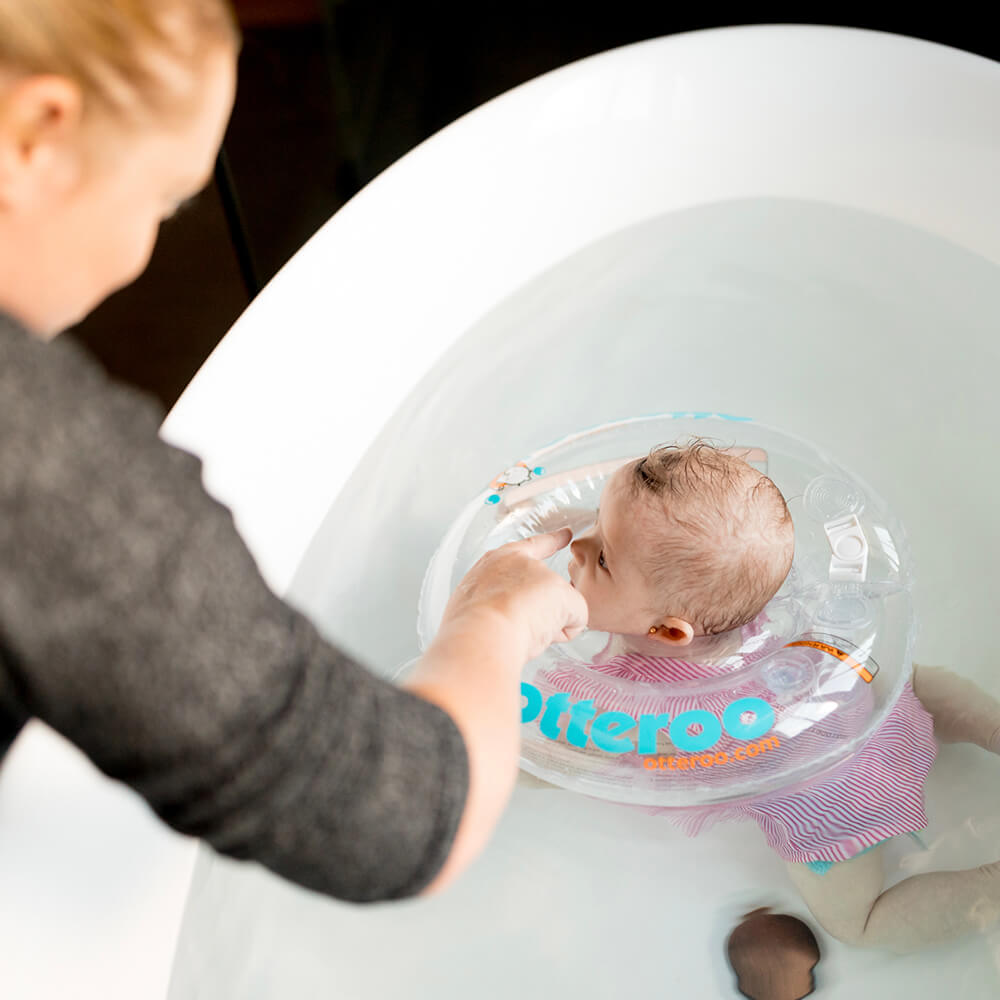Because you’re here, we’re guessing you’re intrigued about Otteroo but want to learn more about its safety. We thank you for your curiosity and are grateful to take this opportunity to address the most commonly asked questions from parents like you.
So, is Otteroo safe?
Just like any product you interact with, safety is a function of using it as intended and directed. We’re no exception – Otteroo is 100% safe when instructions and precautions are followed and you are closely supervising your baby.
Like all inflatables, Otteroo won’t hold its shape if a leak develops and your baby can slip through. So, be sure you’re ALWAYS watching them and can grab them quickly if it becomes necessary!
Ultimately constant and close supervision is an absolute must whenever your baby is in or near water!
What are FDA’s & CPSC’s concerns?
These official warnings resulted from two concerns:
- The CPSC believes that Otteroo is defectively designed because it may deflate (an inherent risk of any inflatable) and therefore it presents a significant drowning risk if the infant is not being supervised.
- The FDA is concerned with the potential risk that a baby neck float may cause neck strain.
We address these two concerns below, and you can find more in-depth information in our official response to the CPSC and this article on the science behind why the baby neck floats do not cause neck strain.
How likely is a drowning accident in Otteroo?
We are very saddened by the drowning of a 6-month old infant, which resulted from the baby being left unattended for extended periods of time and where the details of Otteroo’s involvement are murky and inconsistent.
Knowing that lack of close supervision is the leading cause of unintentional drowning in the pediatric population, we have gone to great lengths to ensure that our communication is plentiful and clear regarding how to use Otteroo safely since day one.
We especially emphasize the importance of never leaving the child unattended while in or near water, and always checking for proper inflation/any leaks prior to each use.
We have since added additional measures, such as requiring parental consent prior to purchasing regarding the risk of drowning, to reiterate the importance of always staying within arm’s reach of your baby while in Otteroo.
How about the baby’s neck?
It is important to first clarify that Otteroo has been used in therapeutic and hospital settings for over 10 years and there have been zero cases of neck strain or injury reported.
In our communications with the FDA since the Safety Communication, they specified their concern is in regards to “young infants [that] typically lack strength and neck control to fully hold their heads upright. In addition, low muscle tone and prolonged head lag has been associated with infants with certain disabilities.”
While Otteroo’s design structurally supports the neck and head (as your arm does when cradling an infant), we respect the FDA’s need for empirical data to reassure them that no such risk exists.
That is why we are working on gathering data / designing a study to show that when an infant is in an Otteroo in the water:
- There is no head lag and therefore, no neck strain can result from head lag.
- The force exerted on the neck is minuscule given the baby's fatty body composition and water’s buoyancy that counters gravitational force.
We are optimistic even though we know it will take time to gather and submit the information the FDA needs.
The final verdict?
Ultimately, Otteroo is a fun, developmentally beneficial water toy that babies and parents love – and comes with a lot of anecdotal perks like putting an end to the witching hour, better and longer sleep, love of water and more!
430K+ families have been loving their upgraded bath and pool time since 2014, and you can check them out on our Instagram page to see just how happy these babies are (uncomfortable babies don’t smile, in our experience!).

